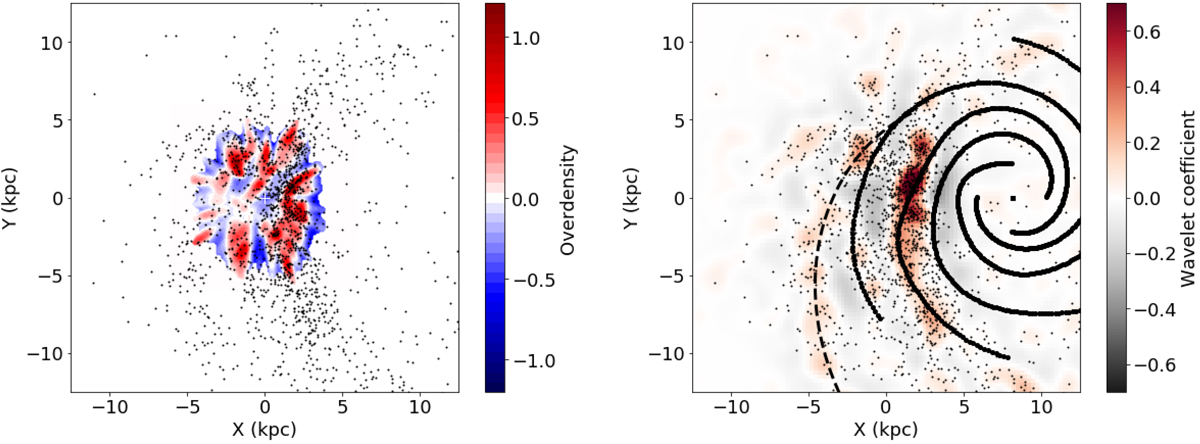The „yet“ makes it sound like we are only a couple years away. Voyager (1977) is the furthest man made object and is 17 light hours away. The milky way in the picture has a diameter of 87.000 light years. So I guess this point of view is like 100.000 lights years away. Maybe I am pessimistic, but I think human kind will never reach this location to snap a real picture like that (and even send it back to earth for another 100.000 light years traveltime).
Now I’m sad. You made me sad. Thanks god tomorrow is Friday.
We would probably only ever get a real image like this if humanity becomes a multi-galactic race. And I agree, the odds of that are close to zero and sad.
It seems more likely to me that at some point in the not too distant future we might be able to make an accurate indirect picture by combining position and velocity data of stars, gas and dust from a future successor of the GAIA satellite and other surveys.
People have tried this, but the Milky Way is immense and the sensitivity/resolution of Gaia is limited (still amazing though!) and distant objects get obscured by gas and dust that is closer by. For example this paper from a few years ago has a this reconstruction:
The „yet“ makes it sound like we are only a couple years away. Voyager (1977) is the furthest man made object and is 17 light hours away. The milky way in the picture has a diameter of 87.000 light years. So I guess this point of view is like 100.000 lights years away. Maybe I am pessimistic, but I think human kind will never reach this location to snap a real picture like that (and even send it back to earth for another 100.000 light years traveltime).
Now I’m sad. You made me sad. Thanks god tomorrow is Friday.
We would probably only ever get a real image like this if humanity becomes a multi-galactic race. And I agree, the odds of that are close to zero and sad.
If only there was a big mirror.
They are sending the voyager along the x(or y) axis. They should have sent it along the z axis
It seems more likely to me that at some point in the not too distant future we might be able to make an accurate indirect picture by combining position and velocity data of stars, gas and dust from a future successor of the GAIA satellite and other surveys.
People have tried this, but the Milky Way is immense and the sensitivity/resolution of Gaia is limited (still amazing though!) and distant objects get obscured by gas and dust that is closer by. For example this paper from a few years ago has a this reconstruction: